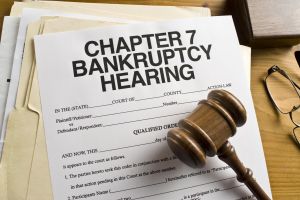
Source: Kirby Hamilton / Getty
As a bankruptcy attorney, I frequently have individuals who really don’t need my services, YET. And, with a keen sense of purpose, they can avoid the credit problems that often lead to filing bankruptcy.
In many cases, poor credit has evolved as a result of irresponsible money management. However, it often happens as a result of unexpected financial hardships. You may have a history of keeping all of your bills current, and then you suffer a disability or loss of your employment. If you are unable to stay current on your debts, it will have a devastating impact on your credit score.
The central claim of credit repair businesses is that they can eliminate negative entries from your credit report. But, were you aware that you too can have them removed, at a lower cost to you? Two methods are available to you to get negative entries removed from your credit report.
The 1st Option is to Dispute the Entry with the Credit Reporting Agency
Credit reporting agencies (CRA) must investigate any disputed item on your credit report. After receiving a dispute letter, the agency is required to determine whether the dispute has merit. The agency may then:
-
-
- remove the disputed item in an expedited dispute resolution;
- Decide that dispute is without merit then notify you with the reasons for its decision; or it must forward the dispute to the creditor,
- within five days, for the creditor to conduct an investigation. If the item cannot be verified by the creditor or the creditor does not respond, the consumer’s position will prevail and the information must be removed from all future credit reports. The consumer can also require the agency to notify past recipients of the credit report of the change.
-
If the dispute follows the receipt of a free annual credit report, the CRA has 45 days to finish its investigation, otherwise, the agency has 30 days. If after 30- 45 days you have not received a response, you should follow-up along with a copy of the original dispute letter.
In addition, when a dispute is received by a creditor, the creditor is required to include a notice that the consumer disputes the information when that information is provided to the CRA. If a dispute is not resolved after a reinvestigation, the consumer’s dispute must be clearly noted by the CRA in all future credit reports. While this may not resolve the issue, permits those getting access to your credit report to know that you are contesting the debt.
The 2nd Option is to Negotiate with Your Creditors
It is intimidating, to say the least, dealing with creditors. This is especially true when you are on bad terms with them. However, talking with your creditors directly may have a positive impact on your getting derogatory information deleted from your credit file.
If you simply have one or two late payments on your account, a creditor may be willing to eliminate the derogatory information after you have returned to being current in your payments. If you’ve had a repossession or have had an account turned over for collection, your full payment could persuade the creditor to remove the derogatory entry. While it may seem like a long shot, simply asking may get the results you seek. Your request to remove late payment information can be made after your account has become current. On the other hand, to remove a repossession or collection action, it is better to negotiate a deal before making any payment. You may be able to pay a fraction of what you owe. But, be prepared to immediately pay the negotiated amount.
If You Are Not Successful in Getting the Bad Entries Removed
No one can guarantee that disputing information on your credit report or even negotiating with creditors, will get derogatory items removed from your report. If your efforts fail, the best thing you can do is work to build up some positive information on your credit report.
When working to restore your credit, the first thing you need to do is bring your past due accounts current. Whenever possible, try to negotiate a deal with your creditors to accomplish this. On the other hand, you can talk to a credit counseling agency. Most importantly, don’t miss payments on your current accounts to pay on those that are past due. If you have to make a choice, always keep the current account current.
After you have caught up on all of your accounts, make it a priority to keep them that way. Making your payments as scheduled will raise your credit score, and over time, the good entries will outweigh the bad. Good luck and may you become more creditworthy in 2019.
* J Thomas Smith is the host of “Sunday Morning Live” on KMJQ/Majic 102.1 (9-11 am). He is an attorney, author, keynote speaker, and mental health consultant. Your comments are welcome: jtsmith@radio-one.com. Follow on Twitter @drjtsmith102













